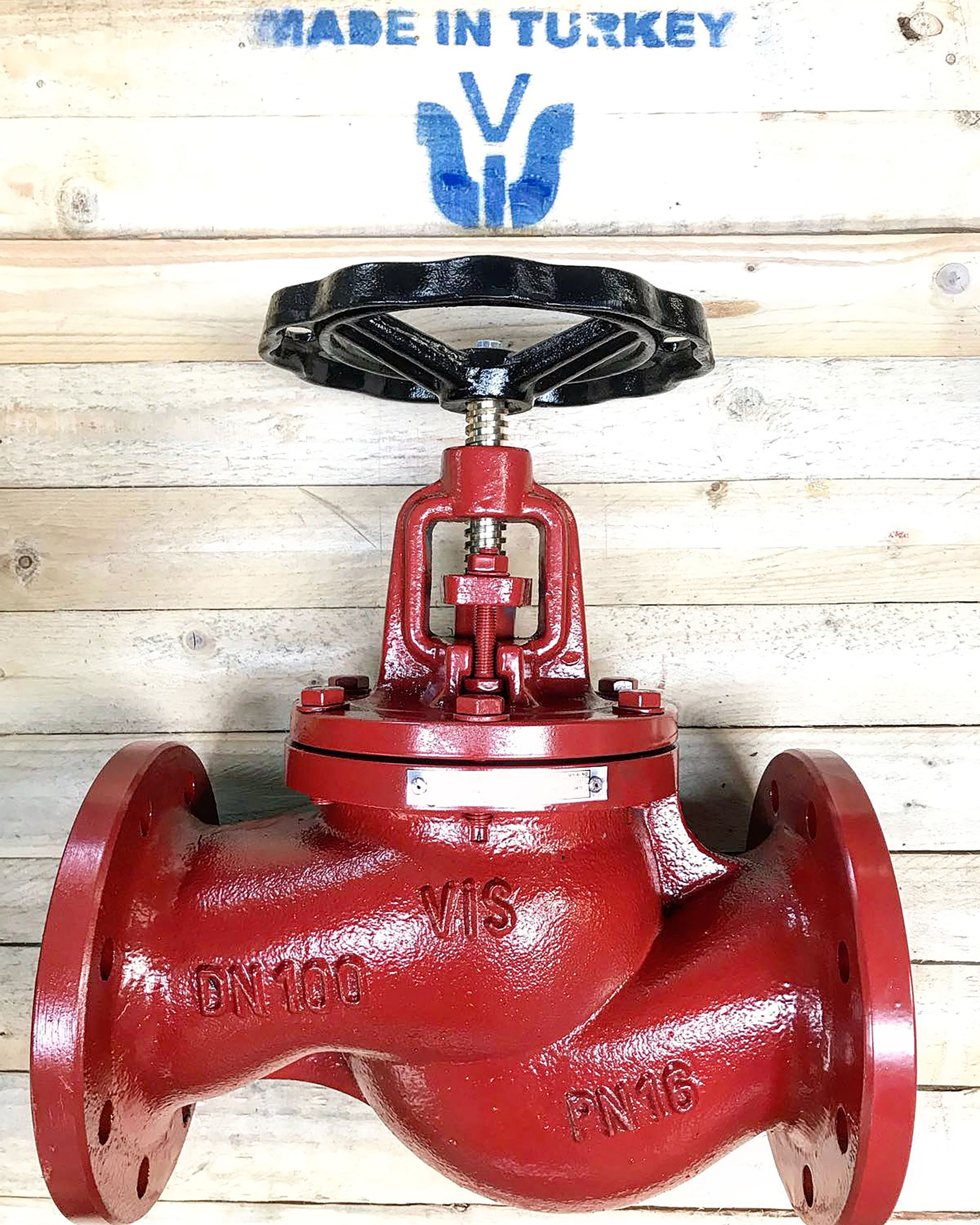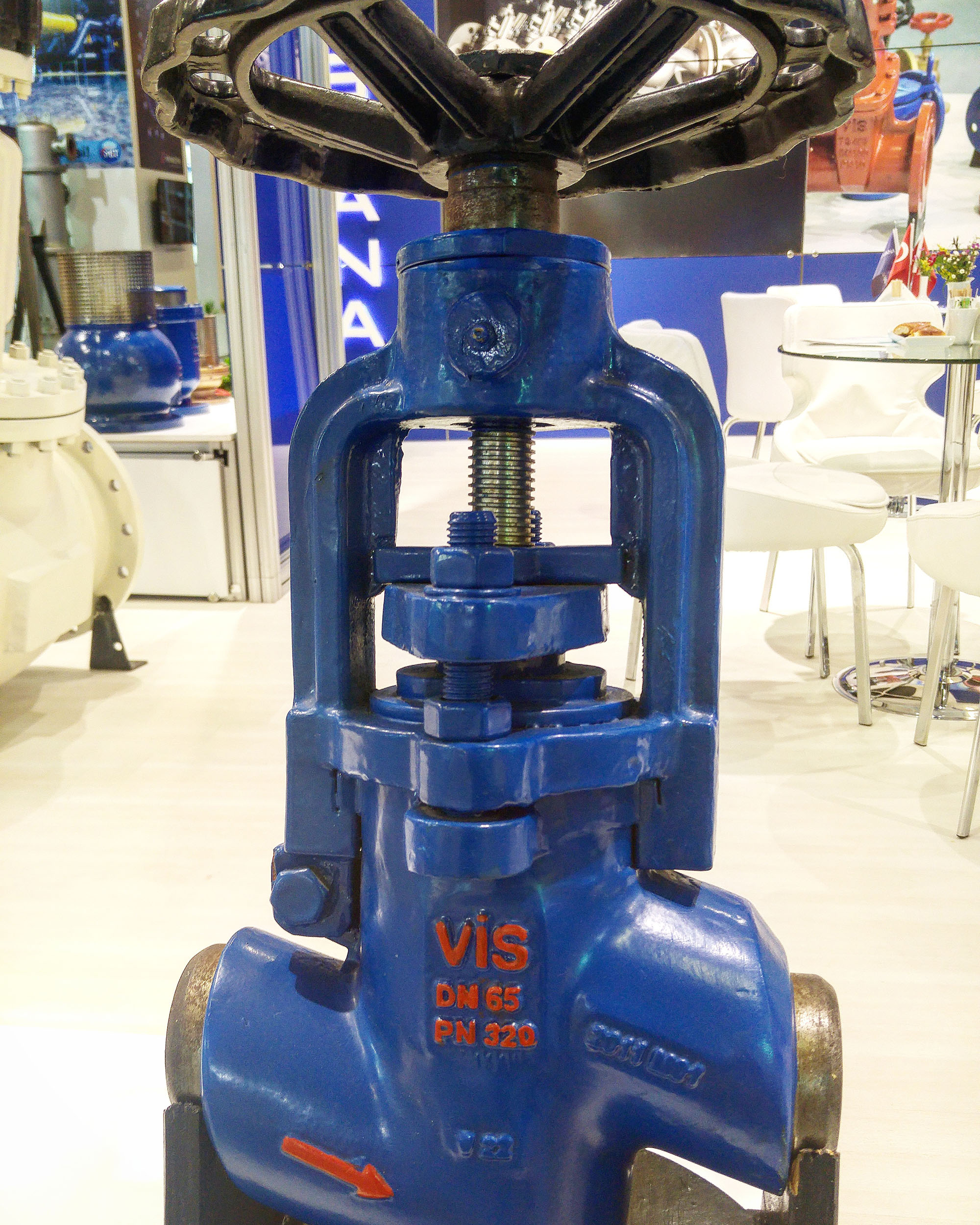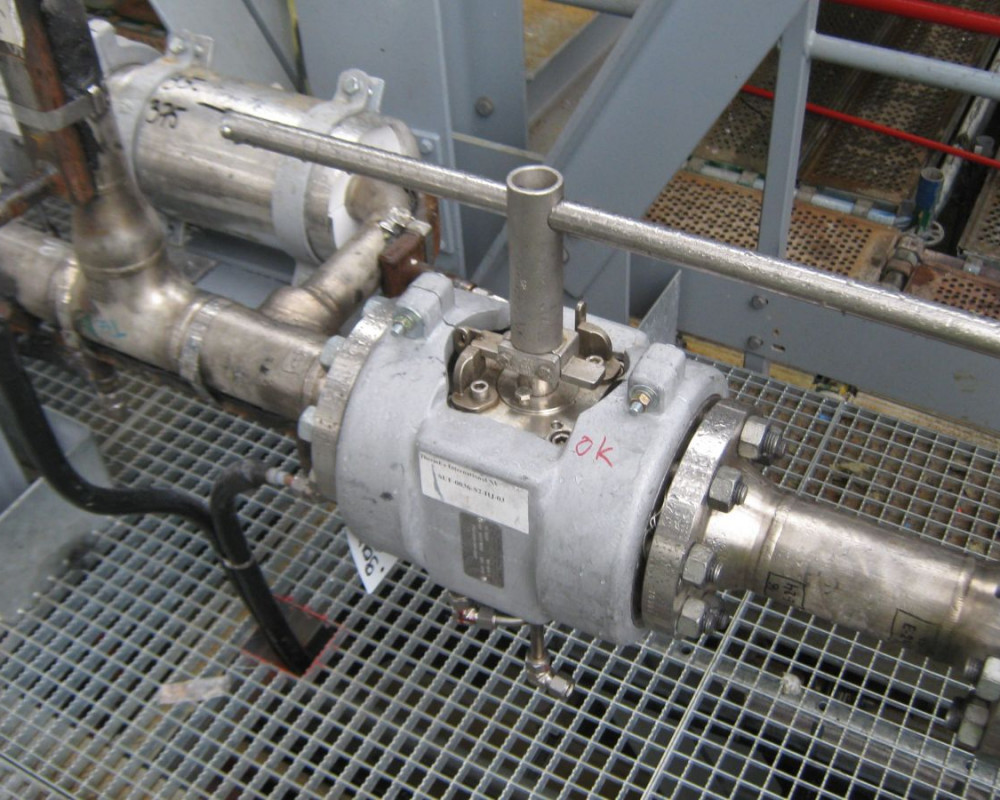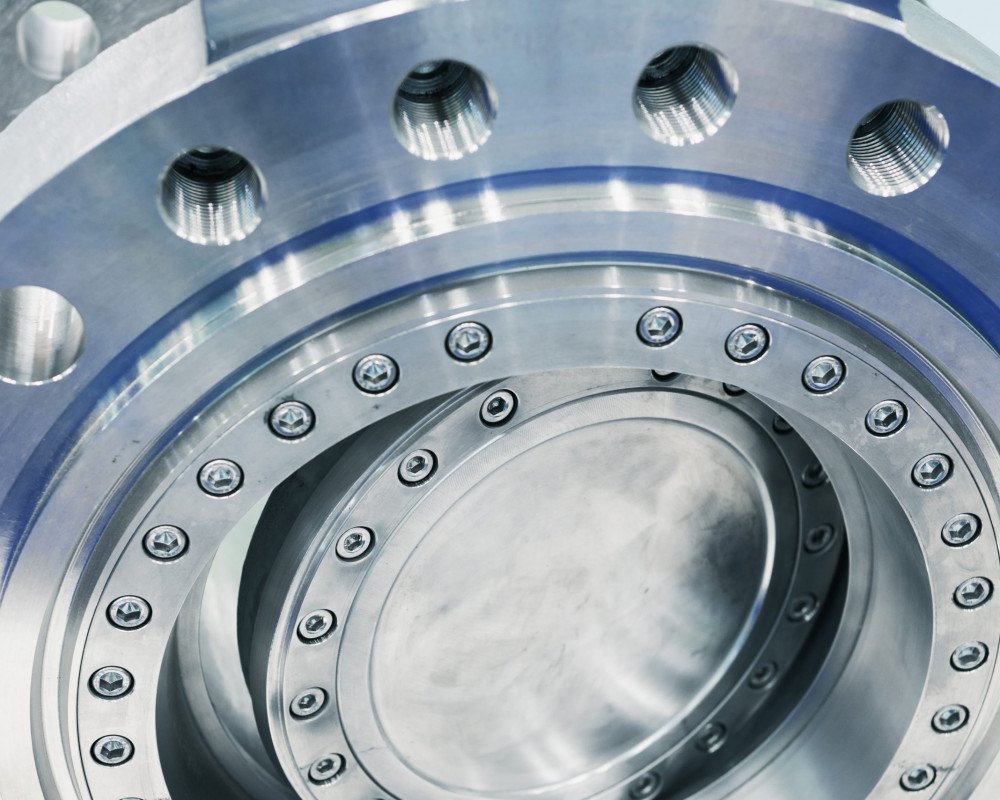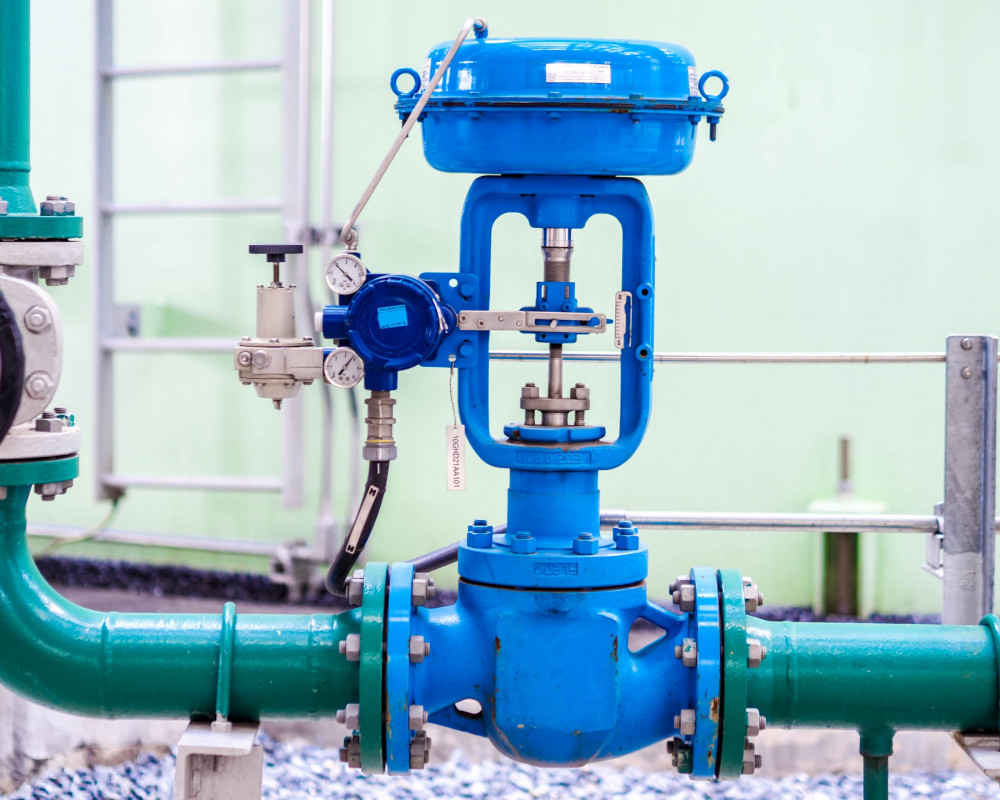GATE VALVES
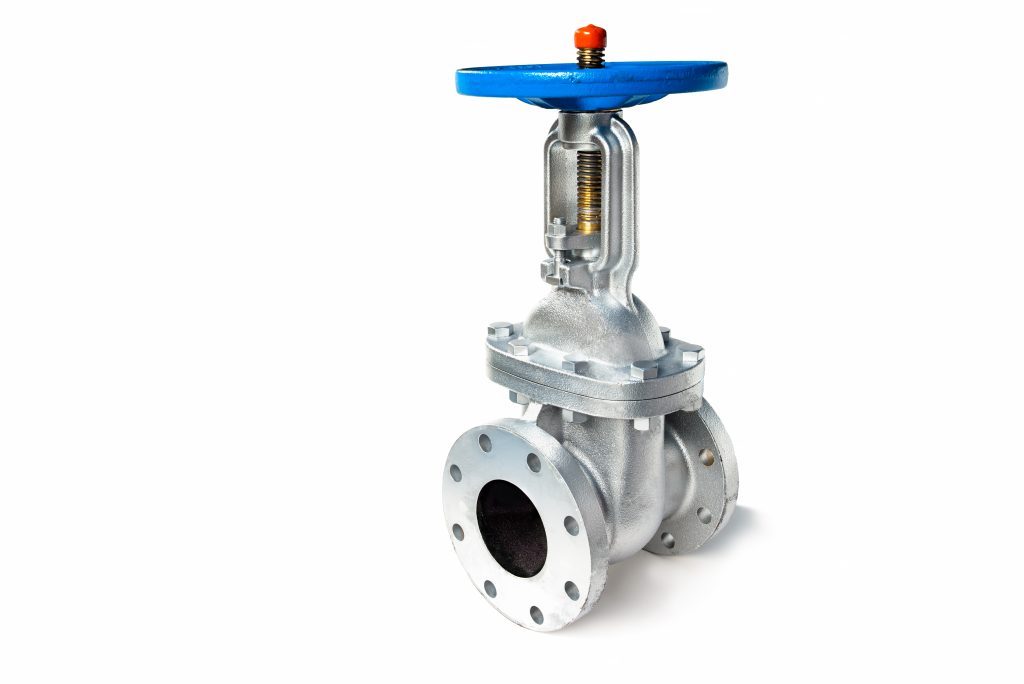
A gate valve is a control valve that either allows media to flow through unobstructed or stops the fluid flow. The main advantage of a gate valve is the straight-through unobstructed passageway, which induces minimal pressure loss over the valve. The unobstructed bore of a gate valve also allows for a pig’s passage in cleaning pipe procedures, unlike butterfly valves. However, gate valves are slower than quarter-turn valves and should only be used in the fully open or closed position, not to regulate the flow. Automated gate valves exist with either an electric or pneumatic actuator, but a manual gate valve is cost-effective since gate valves are typically used infrequently. Gate valves are also commonly referred to as sluice gate valves.
Gate valve actuation method
There are three main types of gate valve actuation methods:
Manual gate valve: A manual gate valve has a manually spun handwheel to open or close the valve, as shown in Figure 3. This requires a user on-site to spin the wheel. A manual gate valve is the most economical, especially since the usage of gate valves once installed is typically low.
Pneumatic gate valve: A pneumatic gate valve uses a pneumatic actuator instead of a handwheel. By utilizing compressed air, the actuator can spin the stem to raise or lower the gate. This allows it to be operated remotely with no user on-site but requires a pneumatic system on site.
Electric gate valve: An electric gate valve uses an electric motor instead of a handwheel. By utilizing electrical power, the actuator spins the stem to raise or lower the gate. This allows it to be operated remotely with no user on-site but requires electrical power on-site. These are also referred to as motorized gate valves.


